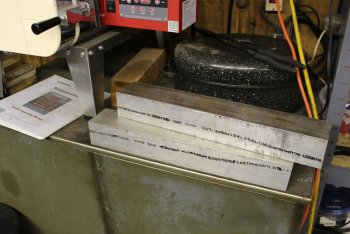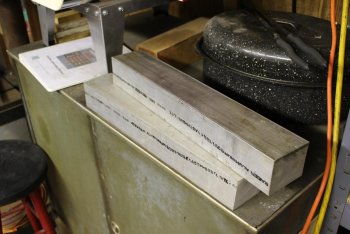LightningSharp
Member
Greetings,
I've read several posts where thick aluminum plates are used to quench air quenched steel such as D2. I was wondering if anyone had tried other materials, like marble or granite. I have some surfaced 2" thick slabs of granite that would fit just right in my press....
any ideas?
Lee Haag
I've read several posts where thick aluminum plates are used to quench air quenched steel such as D2. I was wondering if anyone had tried other materials, like marble or granite. I have some surfaced 2" thick slabs of granite that would fit just right in my press....
any ideas?
Lee Haag



 Not like I had a specific use in mind when I salvaged them from wherever I got em.
Not like I had a specific use in mind when I salvaged them from wherever I got em.